Mad Hedge Biotech and Healthcare Letter
December 12, 2023
Fiat Lux
Featured Trade:
(A REBOUNDING BLUE CHIP)
(PFE), (LLY), (NVO), (RHHBY), (AZN), (SGEN), (VKTX), (TERN), (GPCR), (ALT)
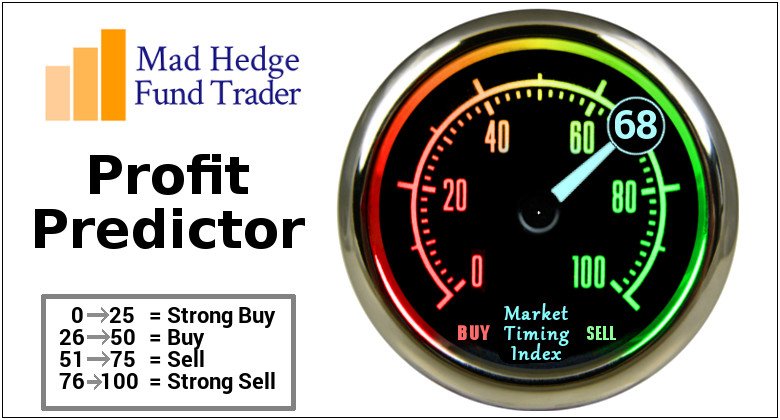
Mad Hedge Biotech and Healthcare Letter
December 12, 2023
Fiat Lux
Featured Trade:
(A REBOUNDING BLUE CHIP)
(PFE), (LLY), (NVO), (RHHBY), (AZN), (SGEN), (VKTX), (TERN), (GPCR), (ALT)

In the maelstrom of 2023, Pfizer (PFE) found itself navigating through a tempest, much to the dismay of shareholders. The aftermath? A harrowing -40% total return loss, leaving shareholders reeling.
This downturn followed Pfizer's COVID-19 vaccine triumph, a success story that lost its sheen as global government demand for the vaccine and Paxlovid antiviral dwindled.
Looking back, Pfizer's narrative in 2023 could rival a Shakespearean tragedy. The demand dip for its COVID arsenal was just the beginning; a cascade of other factors compounded the company's misfortunes.
Take, for instance, the controversial $43 billion acquisition of Seagen (SGEN) in March. While this move aimed for cancer treatment breakthroughs, it was widely seen as a Hail Mary, signaling gaps in Pfizer's drug pipeline.
I estimate this strategy might have slashed shareholder value by at least 10%, given the immediate financial aftermath of the merger.
Then, adding to the woes, Pfizer's Nash County production facility in North Carolina faced devastation by a tornado in July.
It seemed as though, for Pfizer in 2023, trouble came not just in droves but in torrents.
The final blow? The discontinuation of the twice-daily dose development for Danuglipron, Pfizer's weight-loss drug candidate.
This decision casts a shadow over the prospects of its once-a-day dosage, still in trials, and simultaneously cracks open the door for other biotech players in the oral weight-loss drug arena.
Meanwhile, the company also aimed to join the race for obesity treatment innovation. In this arena, injectable weight-loss drugs from Eli Lilly (LLY) and Novo Nordisk (NVO) have set the stage, and now, the demand for oral solutions is burgeoning.
Pfizer once pegged this market's potential at an eye-watering $90 billion a year — a target that has not gone unnoticed by keen biotechs.
Yet, with Pfizer stepping back from its Danuglipron project due to adverse side effects, it finds itself trailing in this race. In comparison, Lilly and Novo are forging ahead with their products, turning Pfizer's stumble into a potential windfall for other biotech firms.
Notably, the biotech sector is witnessing a flurry of activity in response to Pfizer’s failed attempt.
Firms like Viking Therapeutics (VKTX), Terns Pharmaceuticals (TERN), Structure Therapeutics (GPCR), and Altimmune (ALT) have seen their share prices soar following their own positive trial results or strategic announcements.
The diverse approaches these biotechs are employing in their anti-obesity drug development have piqued investors’ interest.
In effect, speculation is rife about which one might emerge as a desirable acquisition target for Pfizer — and this speculation isn't without basis.
I previously shared that Roche Holding (RHHBY) recently acquired Carmot Therapeutics for $2.7 billion, and AstraZeneca (AZN) entered a licensing agreement with Eccogene.
With a history of significant acquisitions, Pfizer might well consider a similar path to address its challenges in the weight-loss pill sector.
Pfizer's journey through 2023 was a series of unfortunate events, to say the least. As we look to the future, questions about potential challenges in 2024 loom.
While major acquisitions seem unlikely in the wake of the Seagen deal, shareholder sentiment is fragile. The immediate risks for Pfizer include the possibility of a 2024 recession impacting sales and a generally bearish stock market, potentially keeping share prices around the $30 mark.
Historically, however, Pfizer has stood as a bastion of strength during recessions and bear markets.
Looking longer term, the specter of Medicare drug price negotiations looms large, threatening to dampen growth investor sentiment.
This challenge isn't unique to Pfizer; it's a cloud hovering over all of Big Pharma.
Yet, despite these formidable challenges, there's a sense that Pfizer's tumultuous 2023 journey might be approaching a pivotal turning point. Investor sentiment is at a nadir, marred by negative press and shareholder dissatisfaction, painting Pfizer as a stock currently out of favor.
As we look ahead into 2024, a cautious optimism emerges. Should Pfizer return to operational normalcy and continue to reduce its reliance on COVID-related sales — now a smaller part of its business — the company could reassert itself as a prime value and dividend player in the Big Pharma space.
For the resilient investor willing to delve into a bruised yet potentially rebounding blue-chip, Pfizer merits a closer examination. After a year where Murphy's Law seemed the only law, Pfizer stands as a beacon of resilience and a potential phoenix in the biotech and healthcare sector.
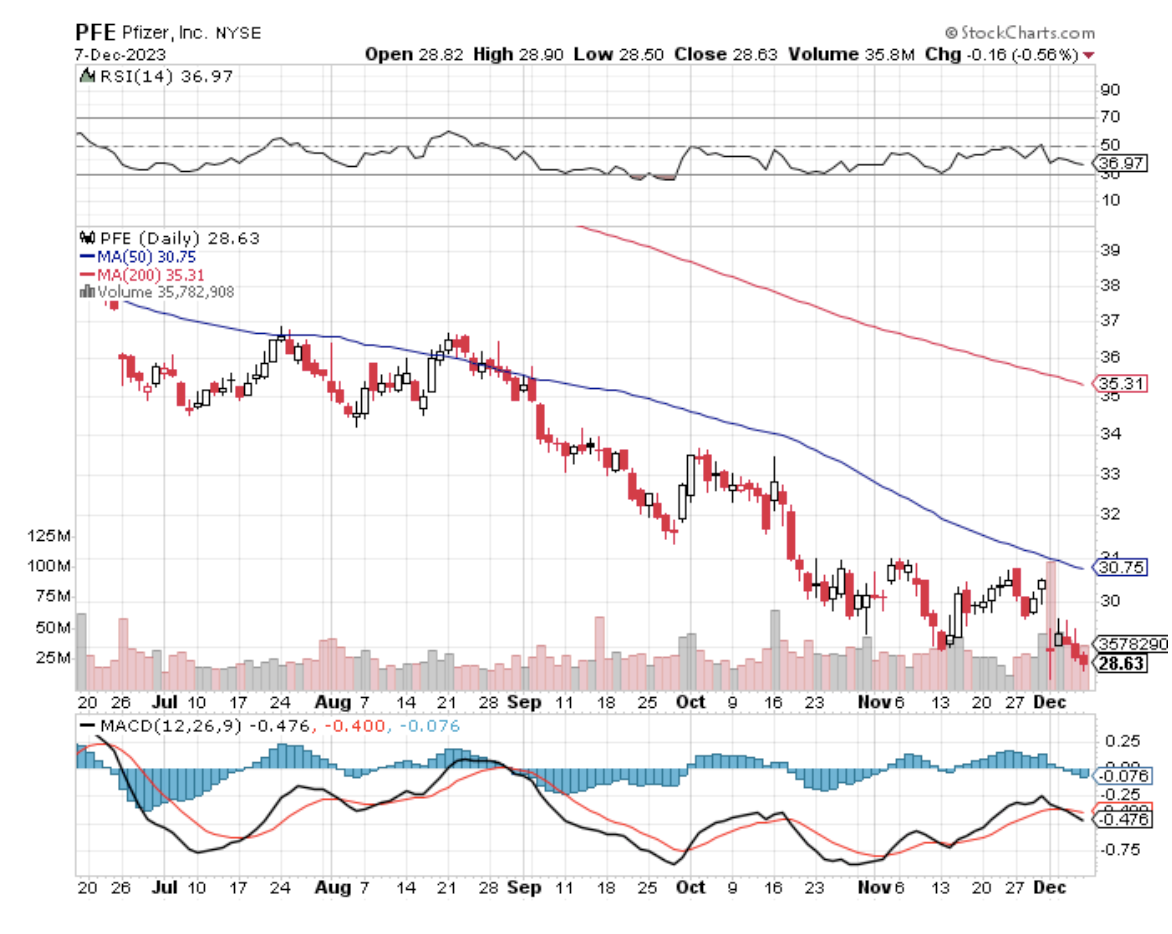
Mad Hedge Biotech and Healthcare Letter
December 7, 2023
Fiat Lux
Featured Trade:
(CHALLENGING THE MAGNIFICENT SEVEN)
(LLY), (NVO), (RHHBY), (AZN), (AMGN), (VKTX), (MSFT), (NVDA)
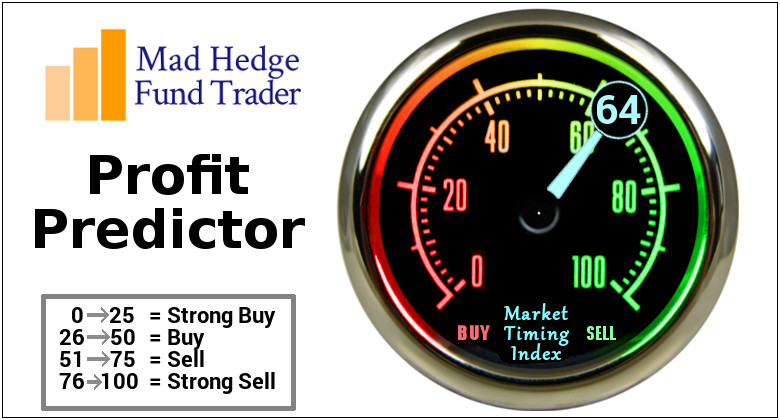
If you thought the S&P 500’s dance floor was exclusively reserved for tech's Magnificent Seven, including the likes of Microsoft (MSFT) and Nvidia (NVDA), think again.
Galloping up from behind, with the confidence of a new sheriff in town, are Eli Lilly (LLY) and Novo Nordisk (NVO), blazing trails in the obesity drug market.
Eli Lilly, with its freshly minted weight-loss drug, has catapulted to an eye-watering market value of nearly $600 billion. That's a leap from less than $100 billion in just over five years – talk about a growth spurt!
On the other side, we have Novo Nordisk, hailing from Denmark and thus not a part of the S&P club. Nevertheless, they're no slouches, sporting a hefty $450 billion market cap, quadrupling in value over five years.
The latest to throw their hat into this lucrative ring is Roche Holdings (RHHBY). They've just penned a $3.1 billion deal to acquire Carmot Therapeutics. This isn't just pocket change – it's a clear signal Roche wants a piece of the weight-loss pie, currently dominated by Eli Lilly and Novo Nordisk.
Carmot Therapeutics, a U.S.-based outfit, is cooking up something special in the GLP-1 receptor agonists segment, a class of drugs stirring up both the market and cultural scene.
Roche, by acquiring Carmot, gains exclusive dibs on three promising drugs, all at different stages of trial.
Now, let's talk numbers.
Roche is shelling out $2.7 billion upfront with another $400 million on the line, based on performance milestones. Analysts reckon Roche is gunning for phase III trials to crash the Eli Lilly and Novo party.
But let's not kid ourselves – it's an uphill battle for market share, considering the head start the other two have.
As for the market's reaction? Roche's stock perked up by 2.5% in Switzerland, although it's still trailing by 15% this year. Eli Lilly and Novo Nordisk, meanwhile, saw a bit of a dip in early trading, despite a strong showing this year.
Ultimately, Roche’s goal isn’t just to focus on the drugs. Instead, the company is eyeing an integrated approach, combining pharmaceuticals, diagnostics, and expertise in cardiovascular and metabolic diseases. It's like putting together a high-stakes puzzle where every piece matters.
Furthermore, other pharma giants are joining the fray. For example, AstraZeneca recently entered a $2 billion deal with China’s Eccogene for a nascent obesity and Type 2 diabetes drug.
But here's the million-dollar question: Are we seeing a bubble in these slimming stocks? It's hard to pin down.
What we do know is that the global obesity epidemic isn't slowing down, and these drugs are showing results.
Take Lilly’s tirzepatide, for instance – it's making waves as both diabetes and obesity treatment, with trial participants shedding an average of 52 pounds.
The financial forecasts are staggering, projecting potential annual sales of $67 billion by 2032, and possibly $100 billion by 2030.
This means obesity drugs might outshine immuno-oncology treatments, another sector with sky-high prices and a vast patient pool.
But this prosperity brings a dilemma.
Eli Lilly's trading at a whopping 90 times this year's earnings forecast. Novo? They're at 39 times. These figures could spell an opportunity for the patient investor, or they could be a harbinger of overestimated growth.
To better navigate this, let’s consider the situation from a different angle. I suggest looking at the broader picture – the intersection of obesity with other conditions like heart disease and NASH. It's a fresh perspective, focusing on specific patient subgroups.
Taking this approach leads us to companies like Amgen (AMGN) and Viking Therapeutics (VKTX), each targeting a different slice of the obesity pie.
Amgen's got its eyes on obesity and heart disease, while Viking is tackling obesity and NASH. Early trials have shown promise, and these companies are exploring novel delivery methods like monthly injections and pill formulations.
It's worth noting that Amgen is more than just a one-trick pony – they've got Repatha for high cholesterol, which could be a game-changer if combined with their obesity treatment.
Viking, although smaller and riskier, is making waves with a drug that's shown significant liver fat reduction in trials.
So, what's the takeaway here?
Well, the obesity sector is ripe with opportunity, but it's also fraught with speculation and risk. Amgen, a solid bet with a 3.2% dividend yield, and Viking, a more speculative choice, are just two examples of the diverse strategies in play.
One thing's for sure: As competition heats up, prices for obesity meds are likely to drop, mirroring the trajectory seen with other high-priced drugs.
The obesity drug market is a complex, rapidly evolving beast. It offers a blend of incredible potential coupled with considerable risk.
For investors willing to ride out the storm, the rewards could be substantial. Meanwhile, for those seeking exposure to the growing sector without the associated risks, a diversified investment strategy could be key.
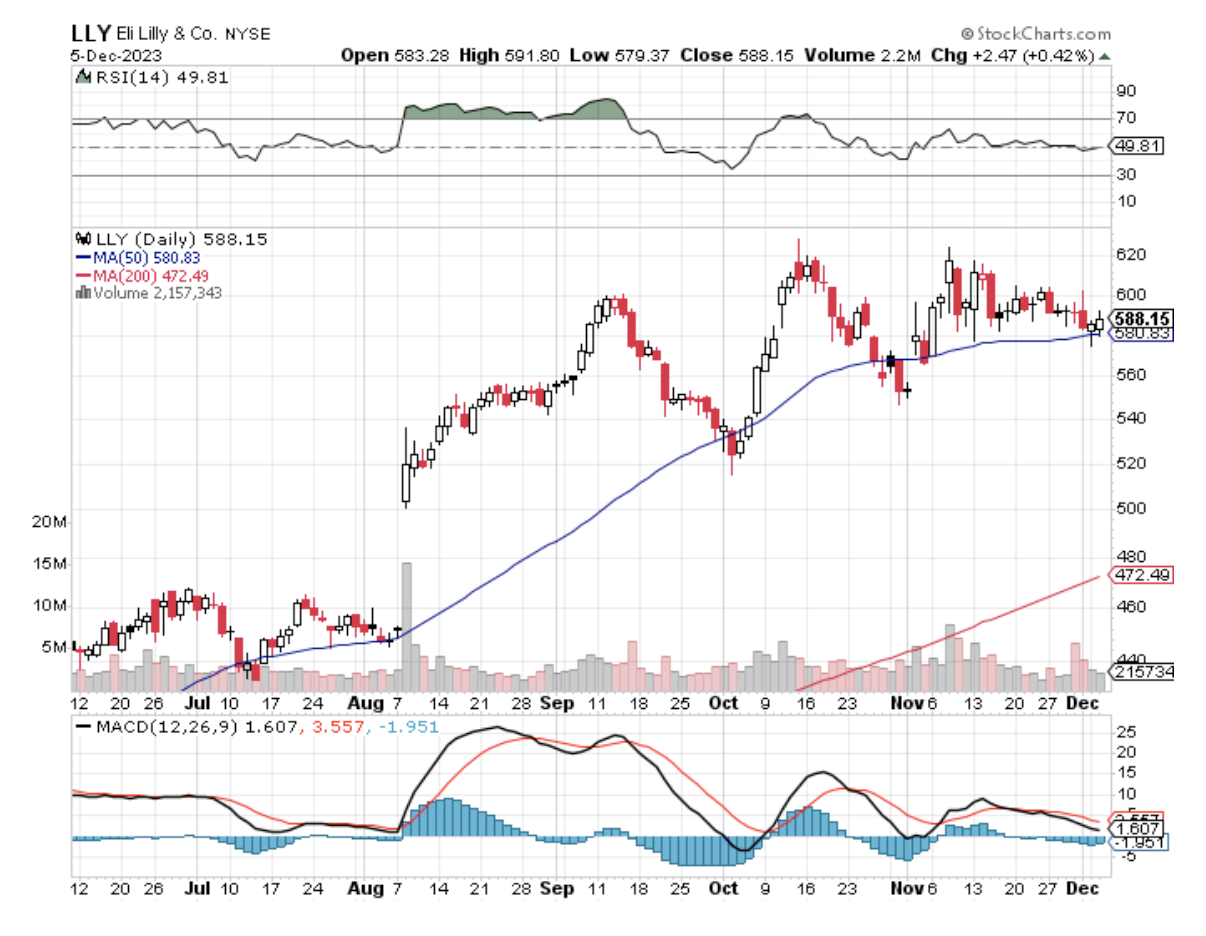
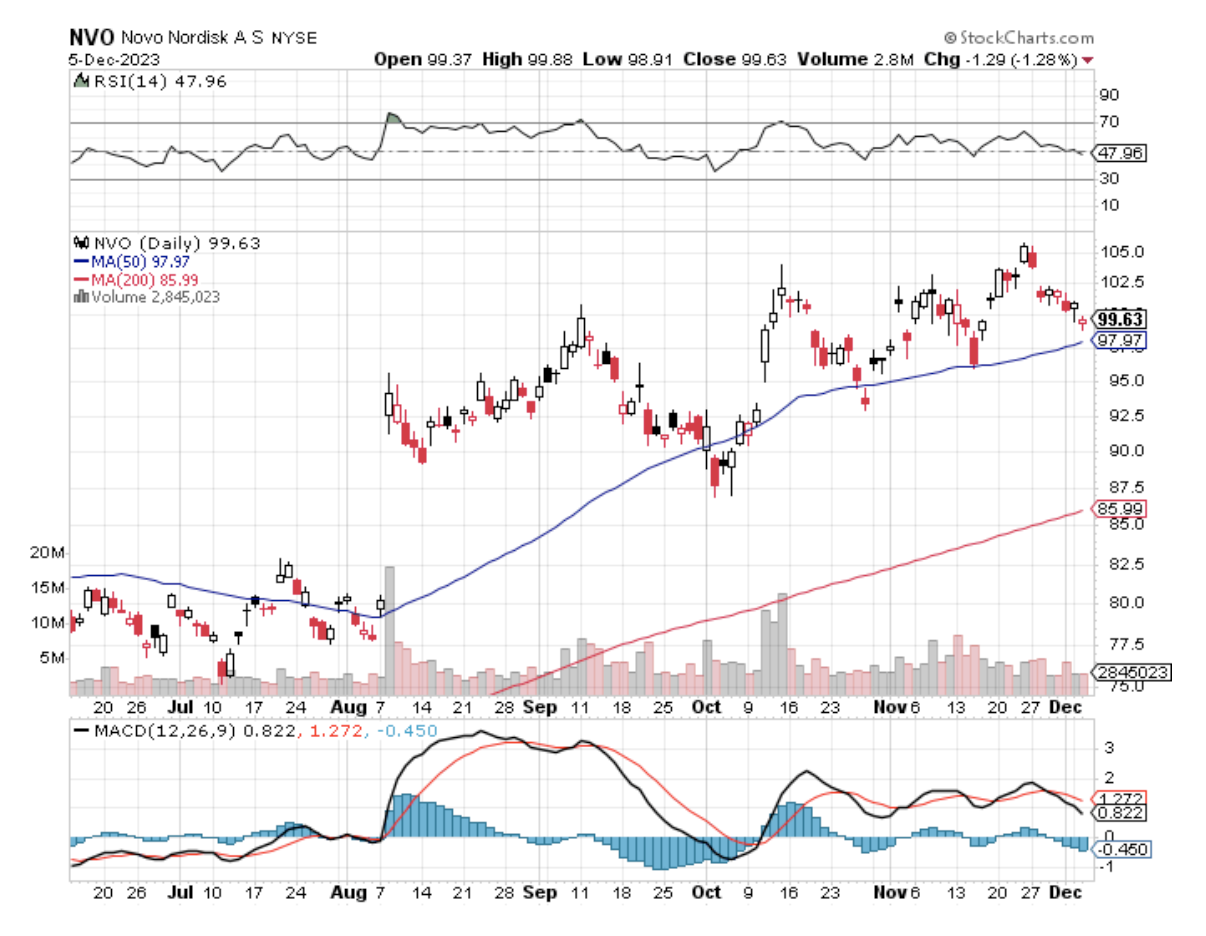

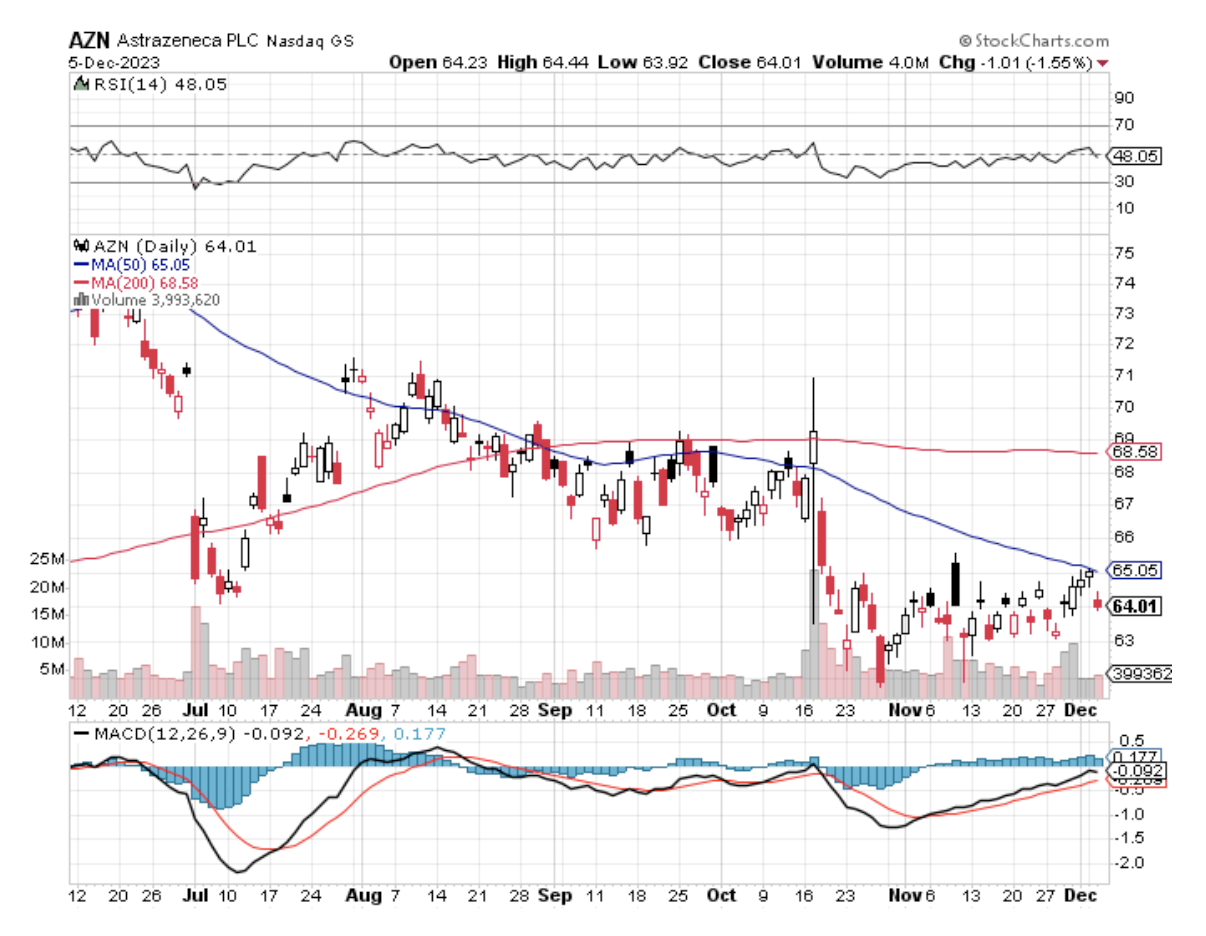


Mad Hedge Biotech and Healthcare Letter
November 14, 2023
Fiat Lux
Featured Trade:
(REWRITING BIOPHARMA’S TRADITIONAL SCRIPT)
(AZN), (JNJ), (BMY), (NVO)
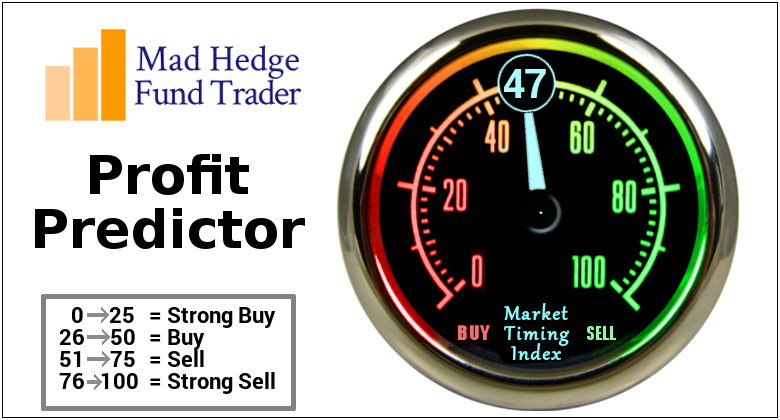
In the high-stakes game of pharmaceutical innovation, AstraZeneca (AZN) isn't just playing to win; it's rewriting the rulebook.
A century-old company, born in the quiet labs of 1913 Sweden, AstraZeneca has become a linchpin in today’s cutting-edge medical advances. This isn't merely a story of corporate survival; it's a journey of transformation, emblematic of how old-world tenacity meets new-world innovation.
As we navigate the intricate world of biotechnology and healthcare, where even giants like Johnson & Johnson (JNJ) and Bristol Myers Squibb (BMY) wobble despite outperforming estimates, AstraZeneca emerges as a study in strategic agility.
Picture this: a company whose shares have seen a 5.7% dip this year, yet it stands as a beacon of opportunity for the discerning investor.
Trading at 15.6 times expected earnings over the next 12 months, it beckons with a valuation that whispers promise, floating below its five-year average.
Needless to say, these aren’t only financial figures but signposts pointing towards a rare investment opportunity in a volatile marketplace.
Let’s delve into the heart of AstraZeneca’s financial anatomy.
Twelve medicines in its arsenal are each marching towards the $1 billion revenue mark this 2023. Tagrisso, its flagship drug, contributes a mere 13.1% to its first-half revenue, showcasing a diversified portfolio that's resilient and well-balanced.
However, innovation isn't without its hurdles.
AstraZeneca faced a 16% decline in Soliris revenue due to patient transitions to newer treatments.
Here lies a lesson in the pursuit of progress – commitment to innovation and affordability can sometimes be a double-edged sword, affecting short-term gains but setting the stage for long-term sustainability. Still, AstraZeneca isn’t one to dwell on its losses for long.
Now, let's turn the page to AstraZeneca's audacious new chapter: entering the fiercely competitive arena of weight-loss medication.
Through a licensing agreement with China’s Eccogene, it's poised to develop an oral medication in the same class as Novo Nordisk’s (NVO) Wegovy drug.
But, the key factor that distinguishes AstraZeneca’s efforts is the pricing, which the company aims to be roughly half the current cost today.
To put things in perspective, Wegovy is priced at $1,349.02 per package. This figure unfolds into a weekly cost of $269.80. When extended over the span of a year, the drug becomes a more substantial financial commitment at $16,188.24.
Notably, the success of Wegovy has catalyzed Novo Nordisk's shares to soar by almost 50% this year.
Given the demand and AstraZeneca’s plan to adjust the price point, this is more than a simple business move for AstraZeneca; it's a venture that could redefine the accessibility of treatments for conditions like diabetes and obesity, impacting over 1 billion people globally.
In the crucible of the pandemic, AstraZeneca partnered with Oxford University to forge a path in the global health crisis, delivering over 3.5 billion doses of a COVID-19 vaccine worldwide.
Looking ahead, AstraZeneca’s leaders view obesity as another pandemic, signaling a strategic shift that melds business acumen with a commitment to global health.
Meanwhile, the latest earnings report from AstraZeneca is proof of its resilient business model.
Amid a 5.7% dip in its shares, the company's outlook is bullish, with an expectation of a low-teens percentage increase in total revenue excluding COVID-19 drugs.
This projection, backed by a 6% year-over-year revenue growth to $22.3 billion and an adjusted core EPS increase of 13% to $4.07, isn't only impressive; it's a narrative of sustained growth amidst adversity.
In conclusion, AstraZeneca's journey isn’t confined to financial returns; it's about being part of a narrative that’s shaping the future of healthcare innovation. I recommend you buy the dip.
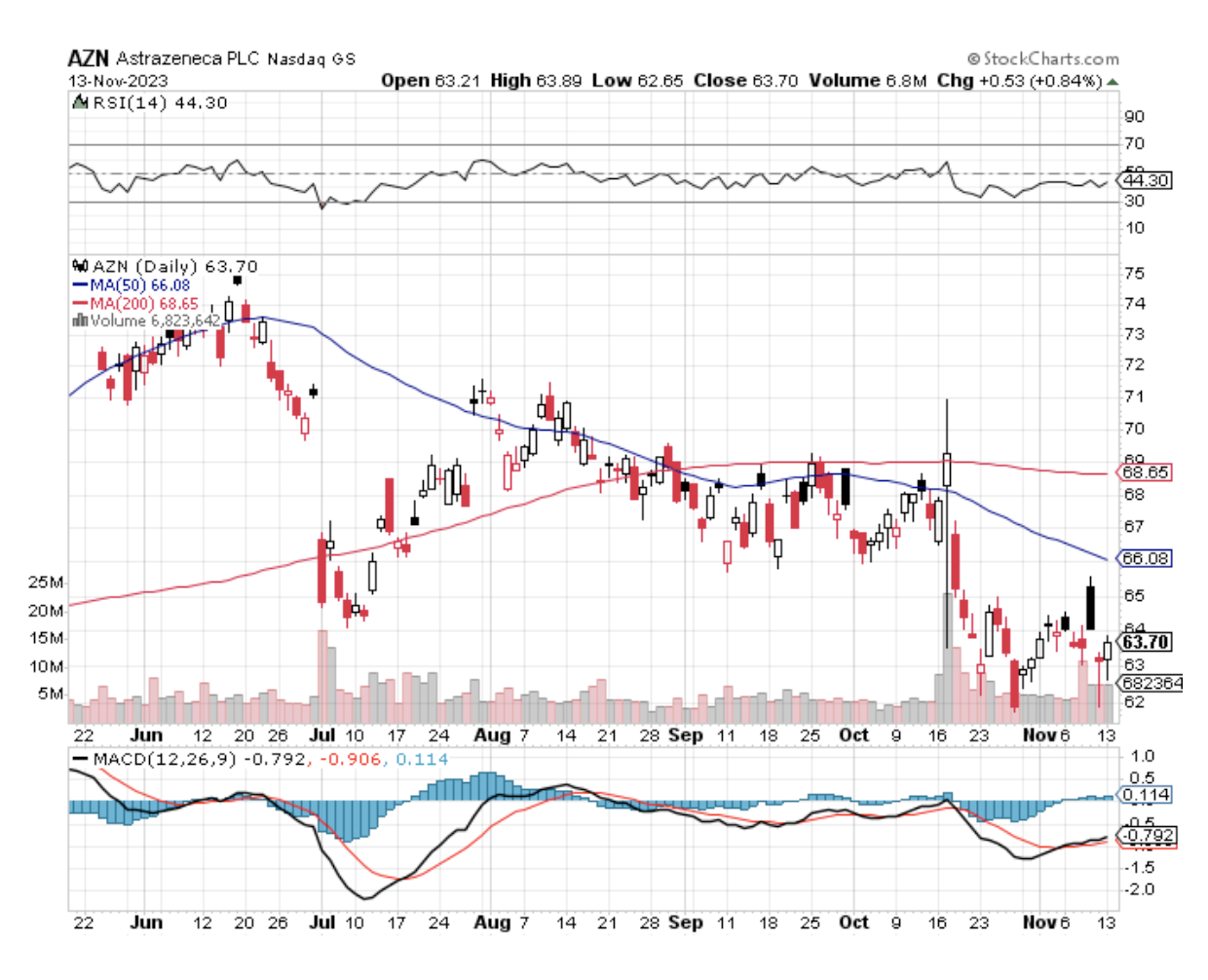
Mad Hedge Biotech and Healthcare Letter
September 19, 2023
Fiat Lux
Featured Trade:
(A SHOT AT HOPE)
(MRNA), (IMTX), (MRK), (PFE), (BMY), (GH), (ILMN), (NVS), (RHHBY), (BGNE), (AZN)
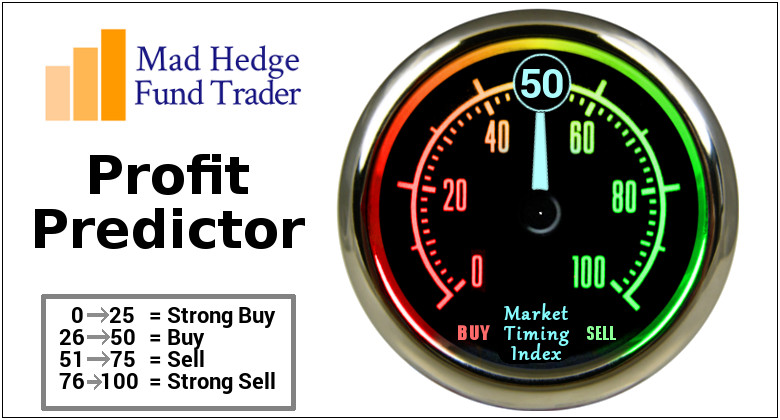
In a quaint Boston lab, as the first rays of dawn broke, a team of scientists, led by Moderna (MRNA), embarked on a mission. Their goal? To craft a solution to one of humanity's most persistent adversaries: cancer.
The grim reality remains that cancer is a leading cause of death in the United States. The statistics are daunting, with over 1.9 million new cases anticipated in 2023 and a projected death toll exceeding 600,000. The financial implications mirror this gravity, with costs expected to soar from $156 billion in 2018 to a staggering $246 billion by 2030.
As the world watched with bated breath, Moderna, already a household name for its COVID-19 vaccine, was silently weaving a narrative that could redefine the future of oncology.
Needless to say, the biotechnology sector, a realm of ceaseless innovation, has been abuzz with Moderna's latest venture. Earlier this month, the biotech announced its agreement with the German drug developer Immatics (IMTX) to develop cancer vaccines and therapies. As part of the deal, Moderna will pay $120 million in cash and will also make additional milestone payments.
This collaboration is not just about the financials; it's a beacon of hope for millions.
The partnership is set to merge Moderna's mRNA technology with Immatics’s T-cell receptor platform, focusing on various therapeutic modalities such as bispecifics, cell therapies, and cancer vaccines. Their combined research aims to leverage mRNA technology for in vivo expression of Immatics's half-life extended TCR bispecifics targeting cancer-specific HLA-presented peptides, among other innovative approaches.
With an upfront investment of $120 million, Moderna has made it clear: they're in it to win it. And the stakes? Potentially life-changing cancer vaccines.
However, this isn’t Moderna’s first foray into the realm of cancer treatments.
Building on the momentum of the technology of its highly potent COVID-19 shots, Moderna announced a partnership with Merck (MRK) earlier this year, combining their efforts to come up with treatments that can drastically reduce the spread of skin cancer. By leveraging Merck's Keytruda with its own innovative vaccine, Moderna has showcased the potential of such collaborations in advancing cancer treatment.
After all, the global community oncology services market is not just growing; it's clearly thriving.
From $47.95 billion in 2022 to a projected $53.79 billion in 2023, the numbers speak for themselves. By 2027, this figure is set to skyrocket to $81.33 billion. Such exponential growth underscores the immense potential and critical importance of advancements in oncology.
Yet, as expected, Moderna isn't the only player on the field.
Giants like Novartis (NVS) and Roche (RHHBY) have also thrown their hats in the ring, collaborating with known international cancer organizations to democratize access to cancer medicines. Among the myriad of promising stocks these days, though, Moderna, China’s BeiGene, Ltd. (BGNE), and the UK’s AstraZeneca PLC (AZN) shine the brightest.
Other notable contributors to the fight against cancer include Bristol Myers Squibb (BMY), Guardant Health (GH), Illumina (ILMN), and Pfizer (PFE). Their diverse portfolios and relentless pursuit of innovation are set to shape the future of oncology.
But as the curtains draw on this narrative, the spotlight remains firmly on Moderna. Their success with the COVID-19 vaccine has already etched their name in the annals of medical history. With their sights now set on cancer vaccines, the world waits with eager anticipation.
In the grand tapestry of medical advancements, Moderna's endeavors in the cancer vaccine domain promise to be a golden thread. Their journey, fraught with challenges and uncertainties, is proof of human resilience and ingenuity. As investors, we're not left standing on the sidelines watching history unfold; we're granted an active role in it.
The potential of Moderna's innovations in oncology beckons a promising horizon. For those looking to make a mark in the annals of medical investments, this biotech offers a gateway to the future of oncology. Act now, and be part of this groundbreaking narrative.
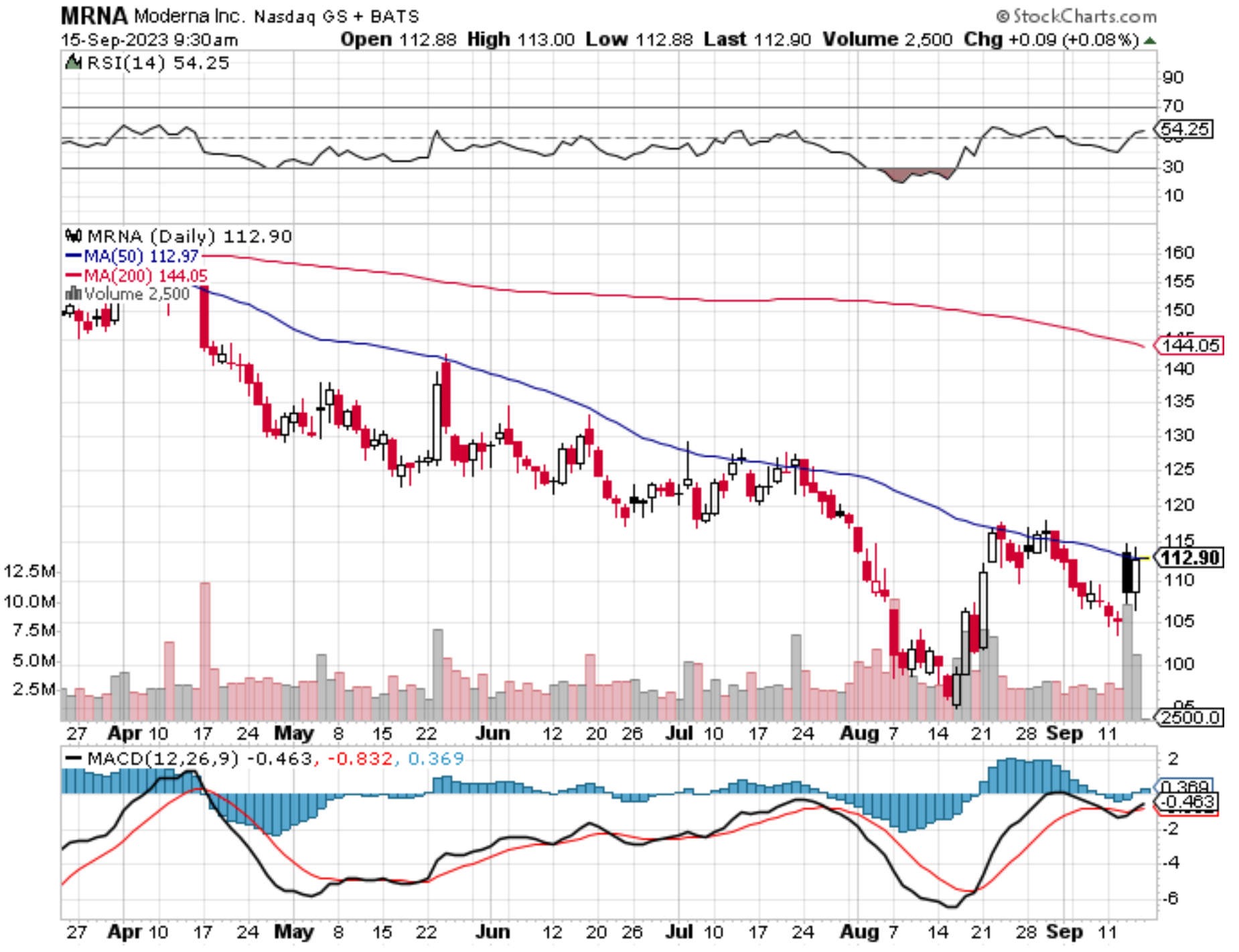
Mad Hedge Biotech and Healthcare Letter
September 7, 2023
Fiat Lux
Featured Trade:
(SUGAR, SPICE, AND EVERYTHING NICE)
(NVO), (LLY), (MRK), (JNJ), (AZN), (LVMH)
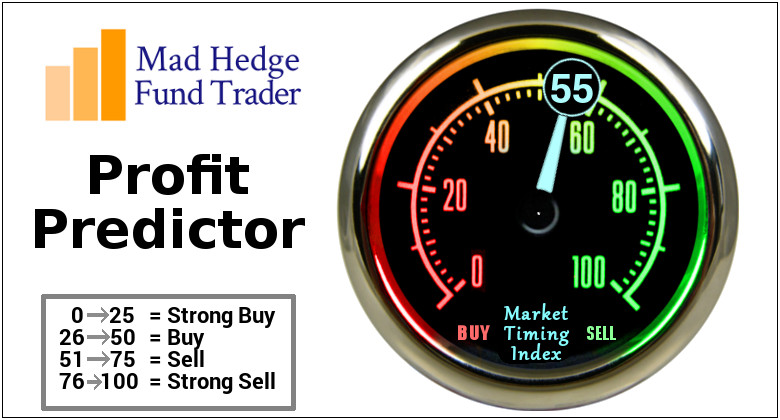
If the weight-loss drug market is a tide, Novo Nordisk (NVO) stands at its crest. As investors, when we seek promising ventures, we look for history, market presence, and future potential–and this Danish pharmaceutical powerhouse seems to tick all these boxes.
Dive into the annals of Novo Nordisk's story, and you'll find a century-old legacy predominantly immersed in diabetes treatment. This enterprise, with Eli Lilly (LLY) and Sanofi (SNY), once commanded an impressive 90% insulin market share.
But things changed when Sanofi made its exit in 2019, setting the stage for Novo Nordisk's next significant act. Though others such as Merck (MRK), Johnson & Johnson (JNJ), and AstraZeneca (AZN) are present in the diabetes space, they operate in unique niches, focusing primarily on small molecules.
So, what is Novo Nordisk's contemporary claim to fame? It’s none other than the weight-loss drug, Wegovy.
As of its recent U.K. debut, Wegovy is now associated with the National Health Service. This was a strategic move that saw the company's value soar, comfortably eclipsing the luxury behemoth Louis Vuitton (LVMH).
The numbers speak for themselves: Novo Nordisk's stock surged 40% this year, pushing its market cap to an enviable $428 billion.
If they were based stateside, this positions them as the 14th most valuable entity in the S&P 500.
What's truly jaw-dropping is the scale of Novo Nordisk's success. It achieved European market leadership with Wegovy's debut in just five significant markets: Denmark, Norway, Germany, the U.S., and the U.K. The demand seems to be exploding every time the drug lands in a new market.
Meanwhile, their main competitor, Eli Lilly, isn't actually that far behind. Bolstered by their Mounjaro drug, they've seen a stock uptick of 52% this year.
Novo Nordisk's current revenue is approximately $26 billion, predominantly from its diabetes drugs lineup. However, by 2030, forecasts predict the obesity market could range from $30 billion to even $100 billion.
And only a few major players are in line to capitalize on this. Notably, Novo Nordisk and Eli Lilly are poised to dominate this space, with a combined projected market share of 82%.
Furthermore, whispers in the pharmaceutical sector suggest that Novo's golden molecule, semaglutide, has broader applications. Beyond diabetes and obesity, it might target three substantial markets in the coming decade.
Firstly, the cardiovascular space, valued at $162 billion in 2022, presents significant potential. Early indications reveal that semaglutide might offer protective benefits against cardiovascular threats. If Novo gains the necessary approvals, its market share could rise substantially.
Secondly, non-alcoholic steatohepatitis (NASH) affects nearly 30 million Americans. Market evaluations for this condition vary, with some projections reaching $62 billion by 2031.
Novo Nordisk is already deep into phase 3 clinical trials, and if semaglutide proves effective here, it would be another feather in the company's cap.
Lastly, the treatment of addiction disorders could be an untapped market for semaglutide. Preliminary research shows promise, but real-world human trials are still in their infancy. If validated, this could open another revenue stream for Novo Nordisk in the years to come.
Overall, Novo Nordisk is more than just a pharmaceutical company; it's a saga of consistent growth, innovation, and potential.
If you had invested in its shares between 2017 and 2019, today's valuation would offer substantial returns.
Admittedly, the current valuation is on the higher side. Still, context matters.
In light of the above, my advice is two-fold. For those eyeing short-term gains, a 'Hold' might be the best strategy for Novo Nordisk. But if you're in it for the long haul, with a decade or more in view, this is a definitive 'Buy.'

Legal Disclaimer
There is a very high degree of risk involved in trading. Past results are not indicative of future returns. MadHedgeFundTrader.com and all individuals affiliated with this site assume no responsibilities for your trading and investment results. The indicators, strategies, columns, articles and all other features are for educational purposes only and should not be construed as investment advice. Information for futures trading observations are obtained from sources believed to be reliable, but we do not warrant its completeness or accuracy, or warrant any results from the use of the information. Your use of the trading observations is entirely at your own risk and it is your sole responsibility to evaluate the accuracy, completeness and usefulness of the information. You must assess the risk of any trade with your broker and make your own independent decisions regarding any securities mentioned herein. Affiliates of MadHedgeFundTrader.com may have a position or effect transactions in the securities described herein (or options thereon) and/or otherwise employ trading strategies that may be consistent or inconsistent with the provided strategies.
This site uses cookies. By continuing to browse the site, you are agreeing to our use of cookies.
OKLearn moreWe may request cookies to be set on your device. We use cookies to let us know when you visit our websites, how you interact with us, to enrich your user experience, and to customize your relationship with our website.
Click on the different category headings to find out more. You can also change some of your preferences. Note that blocking some types of cookies may impact your experience on our websites and the services we are able to offer.
These cookies are strictly necessary to provide you with services available through our website and to use some of its features.
Because these cookies are strictly necessary to deliver the website, refuseing them will have impact how our site functions. You always can block or delete cookies by changing your browser settings and force blocking all cookies on this website. But this will always prompt you to accept/refuse cookies when revisiting our site.
We fully respect if you want to refuse cookies but to avoid asking you again and again kindly allow us to store a cookie for that. You are free to opt out any time or opt in for other cookies to get a better experience. If you refuse cookies we will remove all set cookies in our domain.
We provide you with a list of stored cookies on your computer in our domain so you can check what we stored. Due to security reasons we are not able to show or modify cookies from other domains. You can check these in your browser security settings.
These cookies collect information that is used either in aggregate form to help us understand how our website is being used or how effective our marketing campaigns are, or to help us customize our website and application for you in order to enhance your experience.
If you do not want that we track your visist to our site you can disable tracking in your browser here:
We also use different external services like Google Webfonts, Google Maps, and external Video providers. Since these providers may collect personal data like your IP address we allow you to block them here. Please be aware that this might heavily reduce the functionality and appearance of our site. Changes will take effect once you reload the page.
Google Webfont Settings:
Google Map Settings:
Vimeo and Youtube video embeds:
